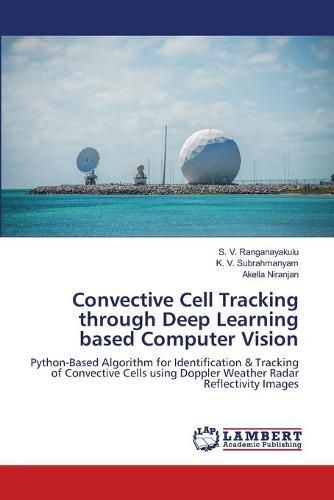Readings Newsletter
Become a Readings Member to make your shopping experience even easier.
Sign in or sign up for free!
You’re not far away from qualifying for FREE standard shipping within Australia
You’ve qualified for FREE standard shipping within Australia
The cart is loading…






This title is printed to order. This book may have been self-published. If so, we cannot guarantee the quality of the content. In the main most books will have gone through the editing process however some may not. We therefore suggest that you be aware of this before ordering this book. If in doubt check either the author or publisher’s details as we are unable to accept any returns unless they are faulty. Please contact us if you have any questions.
The present study developed an autonomous algorithm for the Convective cell Identification and TRAcking (CITRA) using DWR reflectivity images. The CITRA algorithm is implemented in Python using Deep learning technique of Neural Networks. Optical Character Recognition is used in the present study through Tesseract which is an unsupervised Neural Network module based on LSTM which analyses the input dimensional pixel array/image and outputs high-level strings. The algorithm runs through the DWR reflectivity image pixel values and recognizes the intensities of the pixels (>=30 dB) and segregates convective cells along with other estimated cell properties such as centroid of the storm, the area covered, distance and direction from the radar centre. The performance of CITRA algorithm was tested on different convective storms and it could successfully identify and track them along with other physical properties of the convective cells. Further, we have demonstrated the potential application of CITRA algorithm on the evolution of convective cells detected within the radar range. Presently, CITRA algorithm takes only reflectivity images as a single input parameter.
$9.00 standard shipping within Australia
FREE standard shipping within Australia for orders over $100.00
Express & International shipping calculated at checkout
This title is printed to order. This book may have been self-published. If so, we cannot guarantee the quality of the content. In the main most books will have gone through the editing process however some may not. We therefore suggest that you be aware of this before ordering this book. If in doubt check either the author or publisher’s details as we are unable to accept any returns unless they are faulty. Please contact us if you have any questions.
The present study developed an autonomous algorithm for the Convective cell Identification and TRAcking (CITRA) using DWR reflectivity images. The CITRA algorithm is implemented in Python using Deep learning technique of Neural Networks. Optical Character Recognition is used in the present study through Tesseract which is an unsupervised Neural Network module based on LSTM which analyses the input dimensional pixel array/image and outputs high-level strings. The algorithm runs through the DWR reflectivity image pixel values and recognizes the intensities of the pixels (>=30 dB) and segregates convective cells along with other estimated cell properties such as centroid of the storm, the area covered, distance and direction from the radar centre. The performance of CITRA algorithm was tested on different convective storms and it could successfully identify and track them along with other physical properties of the convective cells. Further, we have demonstrated the potential application of CITRA algorithm on the evolution of convective cells detected within the radar range. Presently, CITRA algorithm takes only reflectivity images as a single input parameter.